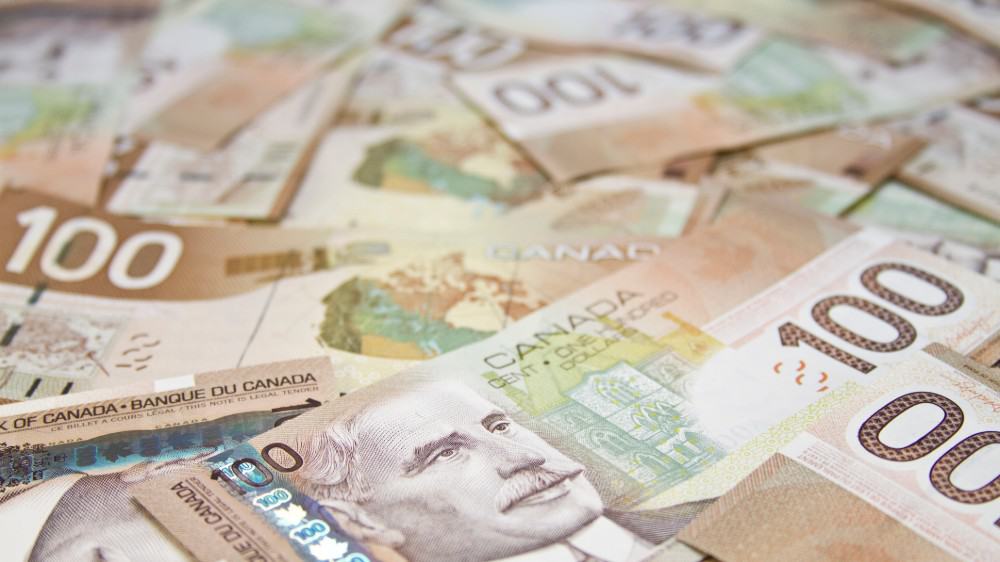CIBC conducted a 2018 survey that revealed Canadians estimated they would need $756,000 in personal savings to retire comfortably.
The inflation in Canada has been low lately — about 0.6% in 2020. However, the Bank of Canada aims for a long-term inflation rate of about 2%.
Let’s be conservative and run our numbers based on a 3% rate. Fast forward to 2021, according to the survey results, Canadians expect to need about $826,000 to retire comfortably.
You might need more or less based on your unique lifestyle. No matter how much you estimate you need for retirement, an essential building block is regularly saving! To get a $826,000 RRSP, invest your savings smartly. I’ll elaborate with some examples below.
Contribute regularly to your RRSP as appropriate
If you’re a high-income earner, contributing to your RRSP to save and invest for retirement makes very good sense. Otherwise, focus on building your TFSA portfolio first, because you can save more taxes by accumulating more RRSP contribution room for future years.
By contributing to your RRSP, you reduce your income taxes immediately for that tax year. You can save substantial amounts of taxes by making a big contribution and jumping from a high tax bracket to a lower one.
Each year, you get 18% of your earned income (up to a certain amount) as additional RRSP contribution. That certain amount was $27,230 in the 2019 tax year, $27,830 in 2020, and $29,210 in 2021. Any unused room accumulates.
Investments inside RRSPs grow in a tax-deferred environment. That is, they don’t get taxed until they leave the account. This is good news for those who are always itching to spend their savings. RRSPs discourage spending, because as soon as you take money out, it is counted as taxable income. So, RRSPs are a good tool for investing for retirement.
Get to $826K in your RRSP with dividend stocks
Because this is your RRSP retirement fund, you might want to keep it conservative. If you’re starting early, you can certainly choose to take lower risks.
High-income earners may be contributing $10,000 or more a year to their RRSP retirement fund. Assuming you just started building your RRSP and you contribute $10,000 a year and aim for a portfolio yield of 3% and growth of 7% a year.
By reinvesting the dividends received along with $10,000 in RRSP contributions each year, you’d reach more than $826,000 in 19 years. Specifically, your RRSP retirement fund will be $836,450. On a 3% portfolio yield, you’d receive dividend income of $25,093 a year at the end of that period.
The RRSP is a fitting place to hold decent-yield U.S. stocks that pay qualified dividends. For example, AbbVie and Realty Income would be great income ideas when bought at the right price.
Analysts believe both stocks are at least fairly valued with Realty Income being a better value at the moment. They provide diversification into the healthcare sector and triple-net-lease subsector and yields of about 4.7% and 4.8%, respectively, at writing.
Get to $826K in your RRSP with growth stocks
You can potentially reach a $826,000 RRSP faster with a portfolio of growth stocks. Consider growth stocks that tend to increase their revenues and earnings at a high rate.
For example, Alimentation Couche-Tard (TSX:ATD.B) is a good candidate. It had revenue setback last year due to the pandemic. However, it was able to expand its EBITDA and net margins and increase its earnings per share by 38% over the last 12 months. If it’s this resilient in a bad year, it can perform even better in the future.
Since 2011, the growth stock has generated returns of 24% per year. The company is much bigger now. However, it’s trading at an attractive multiple. So, it’ll likely persist to outperform over the next five years.
Assuming a 15% rate of return, it would take 18 years to arrive at more than $826,000 in your RRSP. Specifically, you’d achieve $872,115 in that year.
Couche-Tard has also been paying a growing dividend every year since 2007. Although its yield is small at 0.9%, it has increased its dividend by almost 28% per year! That’s a fast-growing dividend.
The Foolish takeaway
Save regularly and contribute an appropriate amount each year to your RRSP. When building your RRSP retirement fund, select each stock carefully, according to your financial goals. Manage the portfolio as a whole and ensure you’ve got a diversified mix of wonderful businesses.










